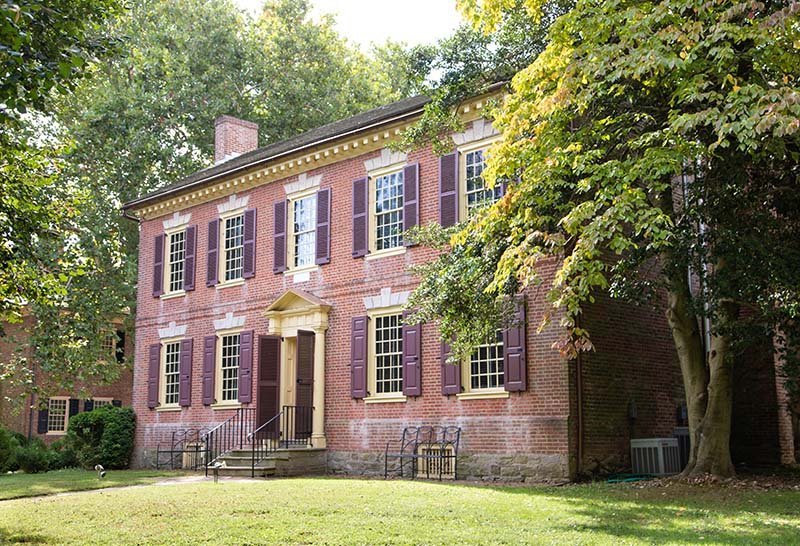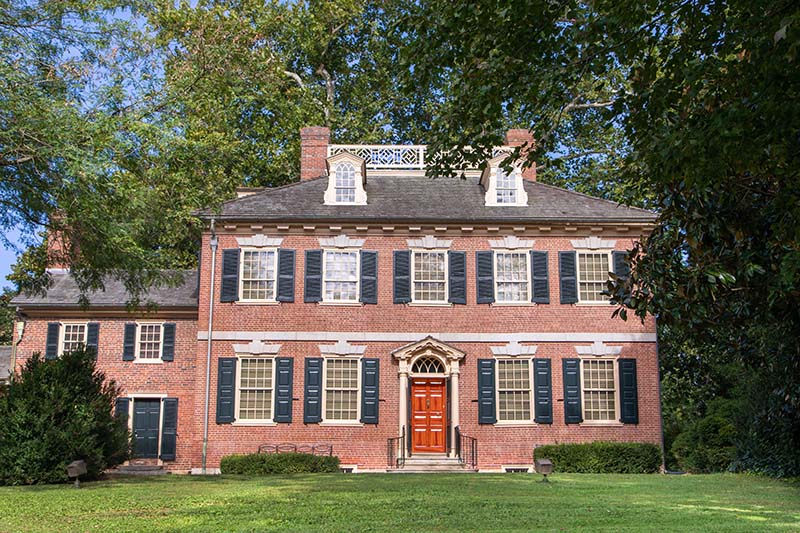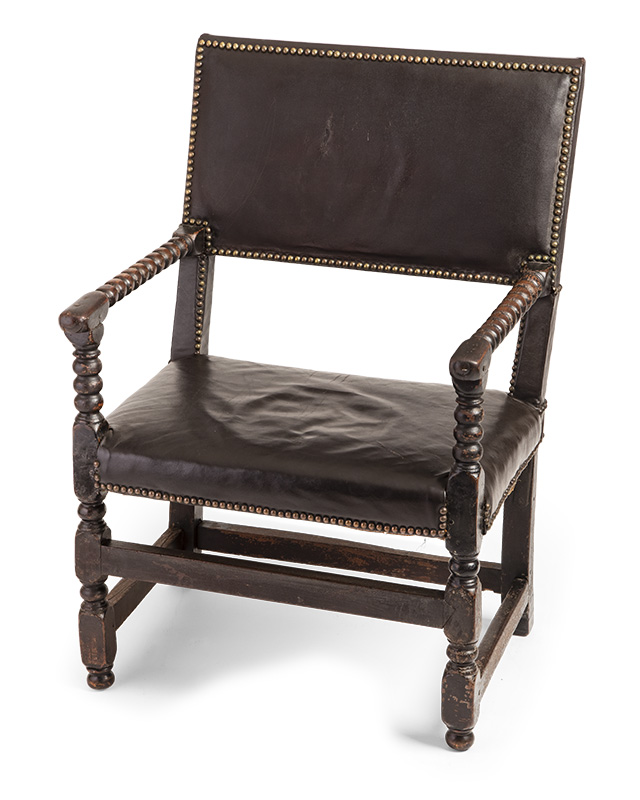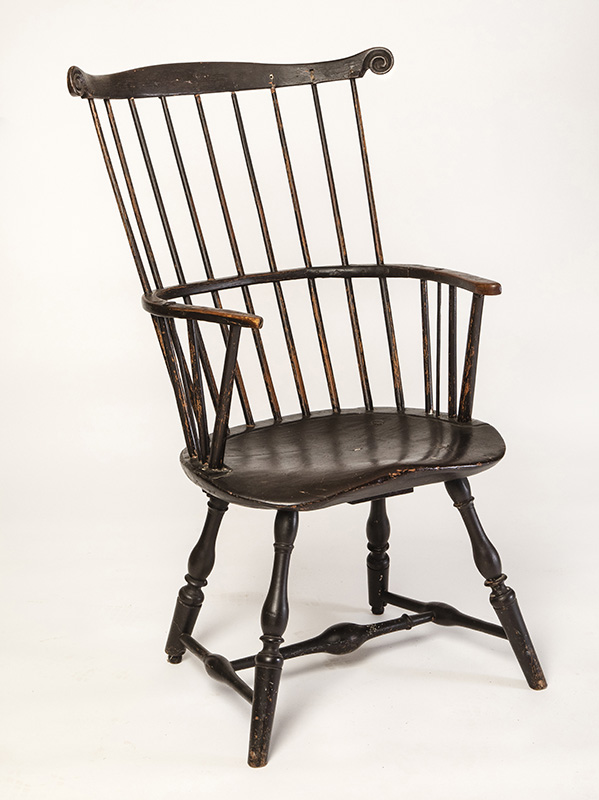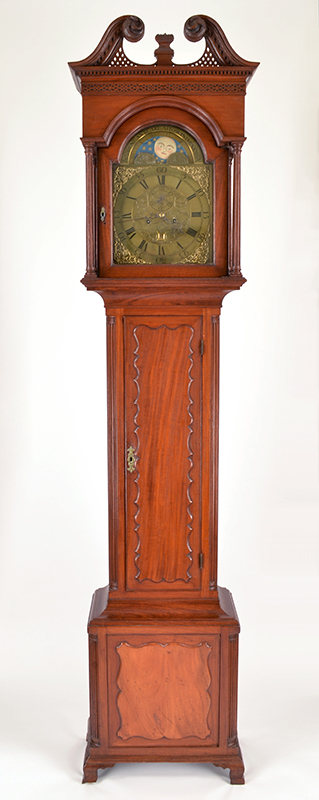Historic Odessa Collections Published
by Philip D. Zimmerman
The village of Odessa, along the Appoquinimink River that flows east into the Delaware River, features two important houses on contiguous lots owned by Delaware’s Historic Odessa Foundation (HOF). David Wilson (1742–1820), a shopkeeper and merchant, built the first in 1769–71 (figure 1), now called the Wilson-Warner House. William Corbit (1746–1818), a tanner, acquired his land from Wilson, who had recently become his brother-in-law, and completed the second in 1774 (figure 2). It is the most refined 18th-century house in Delaware and compares favorably with contemporaries in the Philadelphia area, with impressive exterior appointments, interior woodwork, and a “long room” for entertaining on the second floor. The furnishings embody remarkable provenances that tie them to the community and to each other. One hundred of the objects are addressed in detail in the new book A Storied Past: Collections of Historic Odessa, with four chapters exploring the town’s early settlement, families, craftsmen, and preservation.
A Cromwellian armchair (figure 3) is a fitting place to begin. Largely ignored—even shunned—by furniture and decorative arts scholars, because of its English origin and subsequent repairs. A brass plaque attached to the back of the chair crest associates the chair with William Penn and early Delaware Quakers and symbolizes some essential family attitudes that led to its preservation. This noteworthy label was “signed” by Daniel Corbit (1796–1877, son of William) in 1843 and predates most interest in and affiliations with Penn (to say nothing of old furniture). In 1833, Corbit wrote a leather label of similar wording, minus the Penn reference, that puts this chair in the vanguard of furniture cherished for earlier owners. Initials “EN” stamped into the outside of the rear stretcher probably stand for Eliza Naudain (1810–44), whom Daniel married in 1833, suggesting that she brought the chair into the household. Daniel’s historical sensitivities, however, had already led him to buy an “old chair” in 1824 (figure 4). According to Daniel’s ink inscription on a board used to repair the seat, the chair’s owner was “proverbial for his honesty and other Christian virtues.”
Daniel’s daughter Mary (1848–1923), born of his second wife, Mary Corbit Wilson (1811–80), was the primary preservationist for both families. She reacquired the Wilson-Warner House in 1901, furnished it, and upon her death, it became the first historic house in Delaware to open to the public. Her actions preserved and reunited a corpus of family goods that had begun to disperse through generational descent. As part of Mary Warner’s stewardship, she attached metal tags stamped “Wm. CORBIT HOUSE / ODESSA, DELAWARE 1772” to the backs of several pieces of furniture, probably to distinguish them from others she had acquired, including those with Wilson family histories. Although the dates she included are not always reliable, the tags document the presence of those objects in her collection and her understanding of their ownership history. After her death, some of the furniture drifted away with family members. In 2020, a HOF supporter bought a chest of drawers (figure 5) at auction and, seeing its “CORBIT HOUSE” tag, returned it on loan to the Corbit-Sharp House. Rich historic manuscripts and invaluable research by John A.H. Sweeney, published in Grandeur on the Appoquinimink (1959), confirmed that this chest was originally one of a pair listed in William Corbit’s 1818 estate inventory as being in the Long Room. Inquiries into Corbit descendants uncovered the mate, which is now part of the collection. Not only recognizable as by the hands of the accomplished local furniture maker John Janvier (1749–1801), it is signed by him and dated 1793. It joins other furniture in the collection documented and attributed to Janvier and the next generation of artisans that he trained.
In 1938, Rodney Sharp acquired the Corbit House from direct descendants. He restored the residence to its original appearance and furnished it to his liking. A cousin-in-law and contemporary of Henry Francis du Pont, Sharp collected on a grand scale to achieve his desired look. Fortunately, his efforts included purchasing locally made objects along with building accounts for the Corbit House and other manuscripts. To honor his substantial contributions to preserving the house, his collections are displayed in the Long Room. In addition to a Janvier tall clock (figure 6) and important Philadelphia furniture, he acquired a delightful Boston 1791 sampler, along with all kinds of decorative arts and paintings. In 1958, he donated the house and all of its furnishings to Winterthur. Inspired by Sharp’s generosity, the board of the David Wilson Mansion, Inc., voted in 1968 to merge that house and its contents with Winterthur as well.
Winterthur’s presence in Odessa motivated Margaret Janvier Hort (1899–1981) to secure the future of her own collection. A retired librarian, she had spent decades researching the Janvier family and acquiring Janvier-made furniture from family members. Working with John Sweeney, she donated her formidable Janvier archives to the Winterthur Library and sold the Janvier furniture for installation in Odessa in the early 1970s. Furniture included a dining table Hort identified as Janvier-made without knowledge that it was signed under the top by John Janvier Jr. Her foresight and generosity tied another body of local objects to the site.
Over the decades, family members have continued to donate Corbit and Wilson objects. One of many notable examples is a Wilmington-made coffee service of c. 1808, donated by a fourth-generation descendant of William Corbit (figure 7). The vessels bear the initials “AJ” for Ann Jefferis (1791–1822). Mrs. Warner memorialized their provenance with dates engraved on the coffeepot and creamer from Ann (1806) to Mary Corbit Wilson (1847) to herself (1876). Except for the 1806 date, the others are marriage dates, a likely time when family items changed ownership. A detailed accounting of an 1829 bankruptcy sale in HOF’s archives records that Ann’s mother, Deborah Hunt Jefferis, paid $160.90 for unspecified silver, and it almost certainly was this coffee service. Deborah likely restored this set to Wilson family ownership by giving it to Mary Corbit Wilson, Ann’s only child, perhaps on the occasion of her 1847 marriage to Daniel Corbit.
After operating the houses for four decades, Winterthur had yet to find an audience and clear mission for the Odessa properties. In 2003, the museum closed the entire site. Donnan Sharp, granddaughter of Rodney Sharp, stepped in, and formed the HOF with help from Debbie Buckson, the organization’s first and only director. The HOF assumed ownership of five historic buildings and collections, except those retained by Winterthur, most of which have been on long-term loan since. The HOF performed critical deferred maintenance, trained local docents, and made the place work. Exercising energy and vision beyond the basics, the HOF became a Network to Freedom (Underground Railroad) site and runs school programs that immerse students in experiential colonial lifestyles. The publication of collections is a formidable undertaking for organizations of any size, and this project also heralds the launch of an online collection database and other digital resources, all directed toward sharing the rich historical resources of Odessa with all.
Philip Zimmerman is an independent decorative arts historian and the author of A Storied Past: Collections of the Historic Odessa, published in 2023.
A print version of this article was published in The Magazine of the Decorative Arts Trust, one of our most popular member benefits. Join today!


